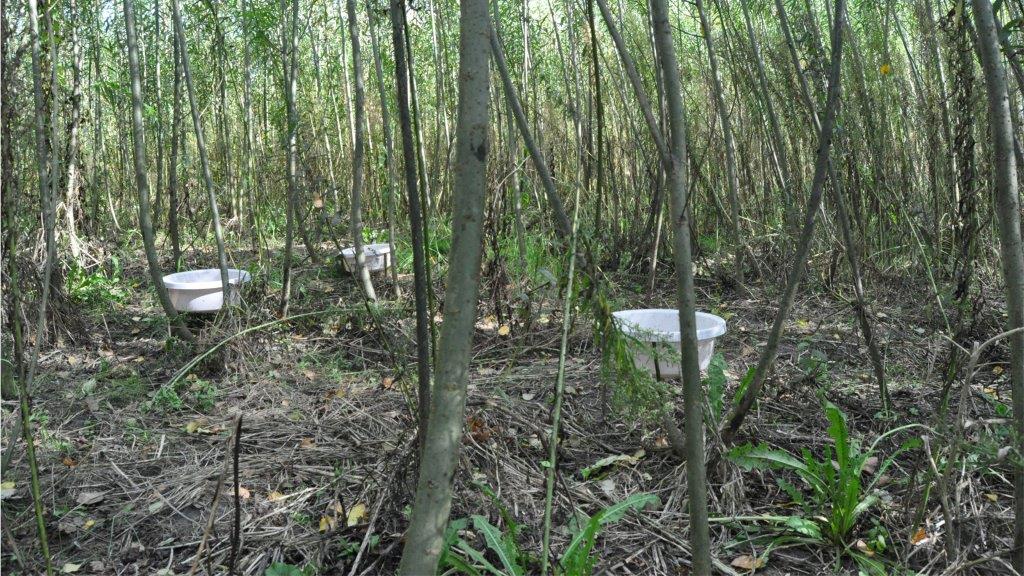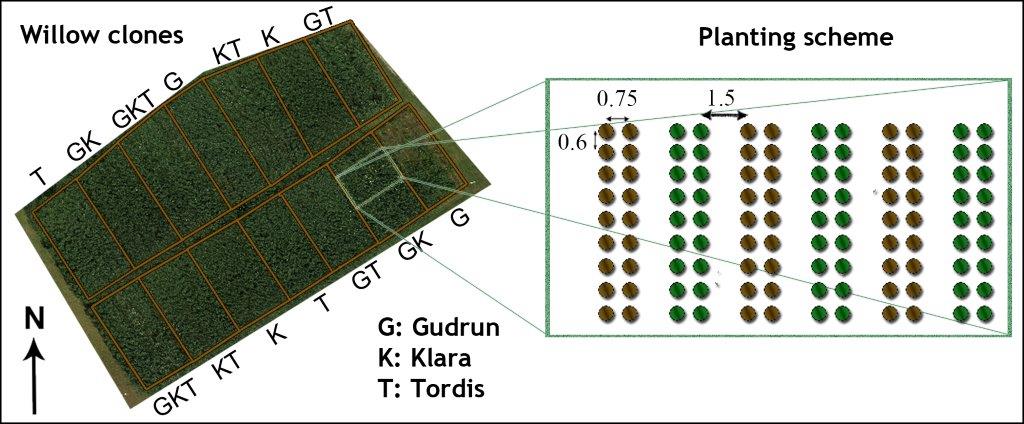SRC
Short Rotation Coppice (SRC) is a silvicultural system with fast-growing woody plant species, of which the aboveground biomass is harvested in relatively short rotations of two to four years. In March 2010, an SRC experiment was planted in Zedelgem with the intention of evaluating diversity effects in SRC stands. The experiment consists of two diversity gradients: one to three different indigenous species and one to three genetically identical willow clones. In February 2014, the site was harvested for the first time.

|
| Litterfall sampling in 2011 |
design
The experiment consists of two blocks, each consisting of two series of seven plots. All seven diversity treatments (three monocultures, three 2-species/clones mixtures and one 3-species/clones mixture) are represented in each row. Plots were c. 33 m x 12 m large and were planted using the Swedish planting scheme, i.e., using double rows, with 0.75 m between the rows in a double row and 1.5 m between the double rows. Within the rows, cuttings were planted c. 0.6 m apart. This results in a density of almost 15 000 cuttings per hectare.
The northern block incorporated a diversity gradient with three hybrid willow clones: Gudrun, Klara and Tordis - all of Swedish produce and planted as cuttings. The southern block contained three indigenous species: silver birch (Betula pendula), black alder (Alnus glutinosa) and goat willow (Salix caprea). Mixing was ‘double-row’ based, so that every double row contained one species/clone.

|
| The northern block of the SRC site, and the double-row planting scheme |
research goals
The focus of the research has been on the relationship between species/clone diversity and woody biomass production. Measurements included tree dimensions, dry biomass, leaf traits (specific leaf area and nutrient content), and thermal aerial images (taken by an Unmanned Aerial Vehicle or ‘drone’).
more info
For more info about the experiment, send an e-mail to the contact person.